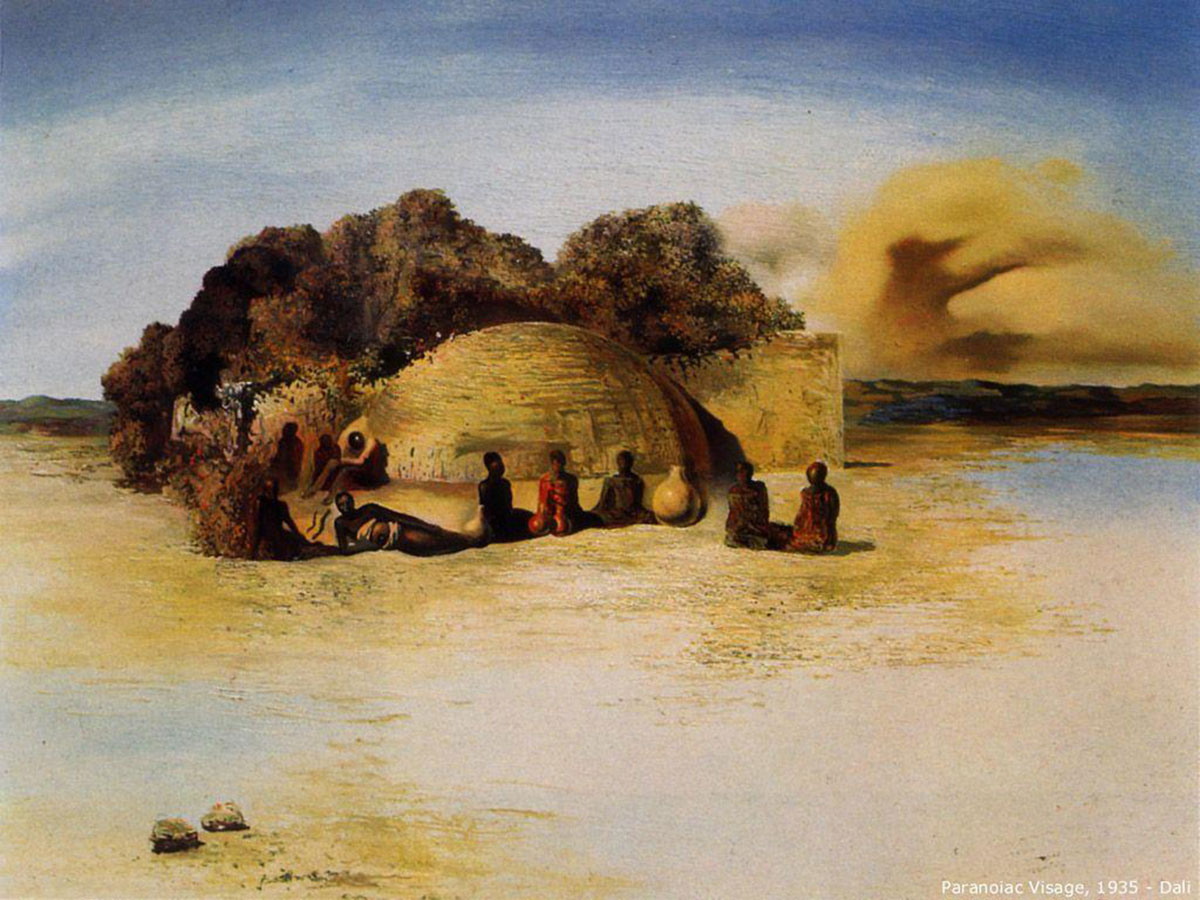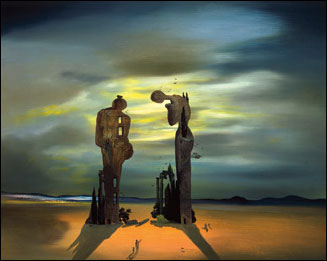

Archeological Reminiscence of Millet's "Angelus"
When Dali was young, Jean-François Millet's painting, The Angelus, one of the most popular images in the world, was reproduced on everything from prints and postcards to everyday objects like teacups and inkwells. The late 19th century painting depicts a peasant couple standing in a field with their heads bowed in prayer. For many it was a sentimental work, but for Dali it was troubling, with layers of hidden meaning, which he explored through daydreams and fantasies. He produced a series of paintings and writings - an entire mythology - on this single image.

Dali wrote that this daydreaming began when he was in elementary school, where The Angelus hung on the wall. He stared at the couple, inventing stories about them. Dali continued this fantasy as an adult. In one instance, he even arranged stones he found on a beach to resemble the two figures. Dali said, "I surrendered myself to a brief fantasy during which I imagined sculptures of the two figures in Millet's 'Angelus' carved out of the highest rocks…."